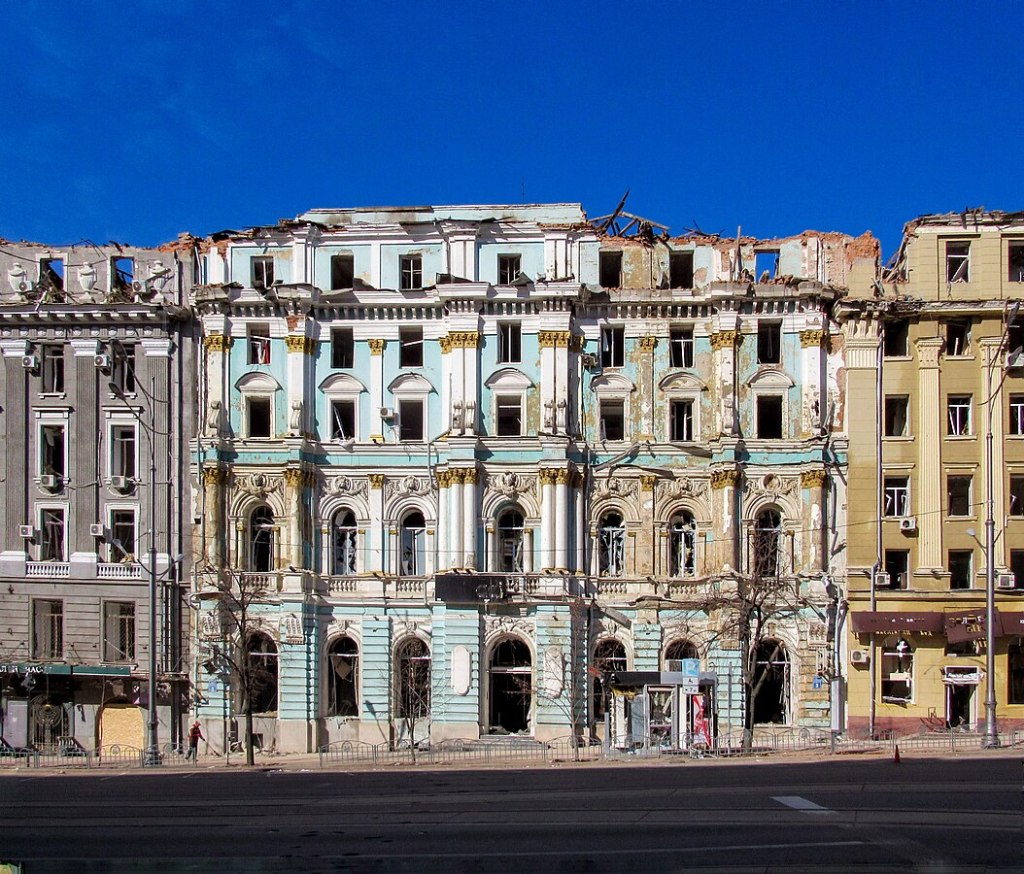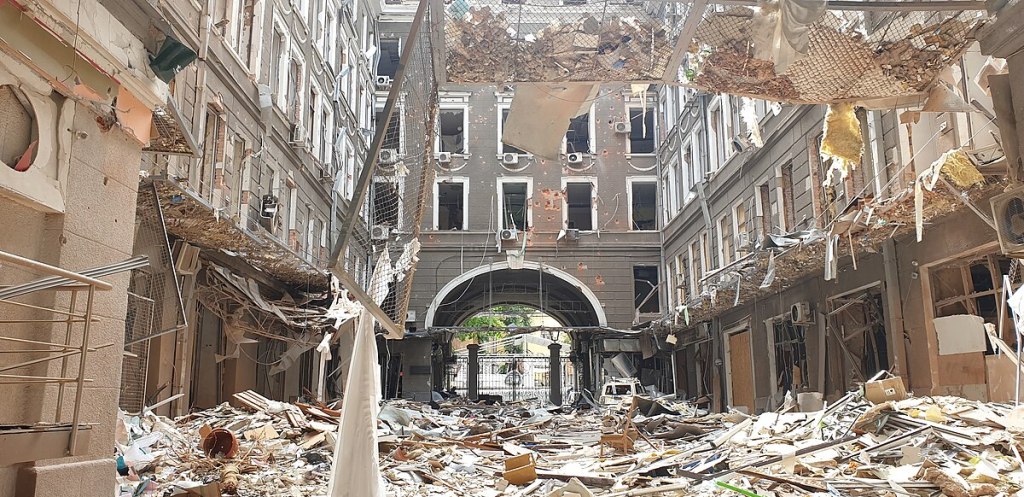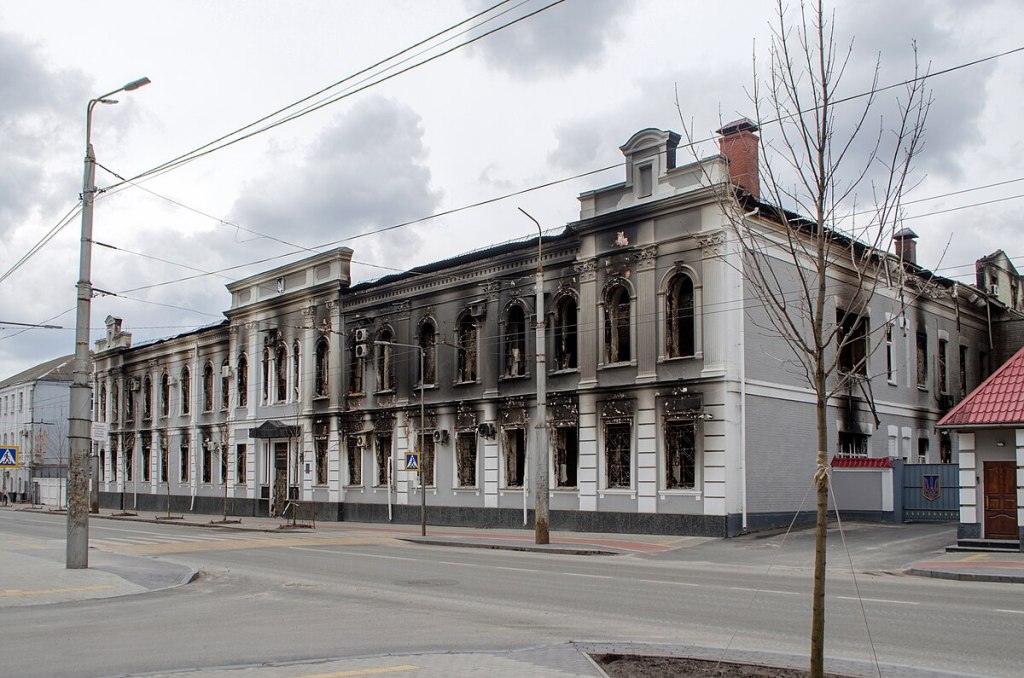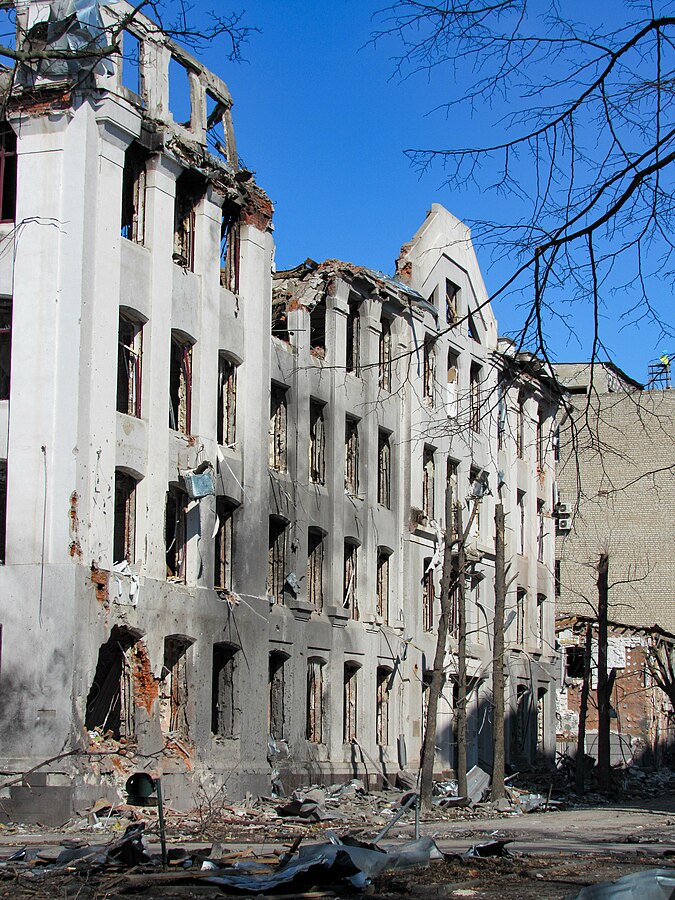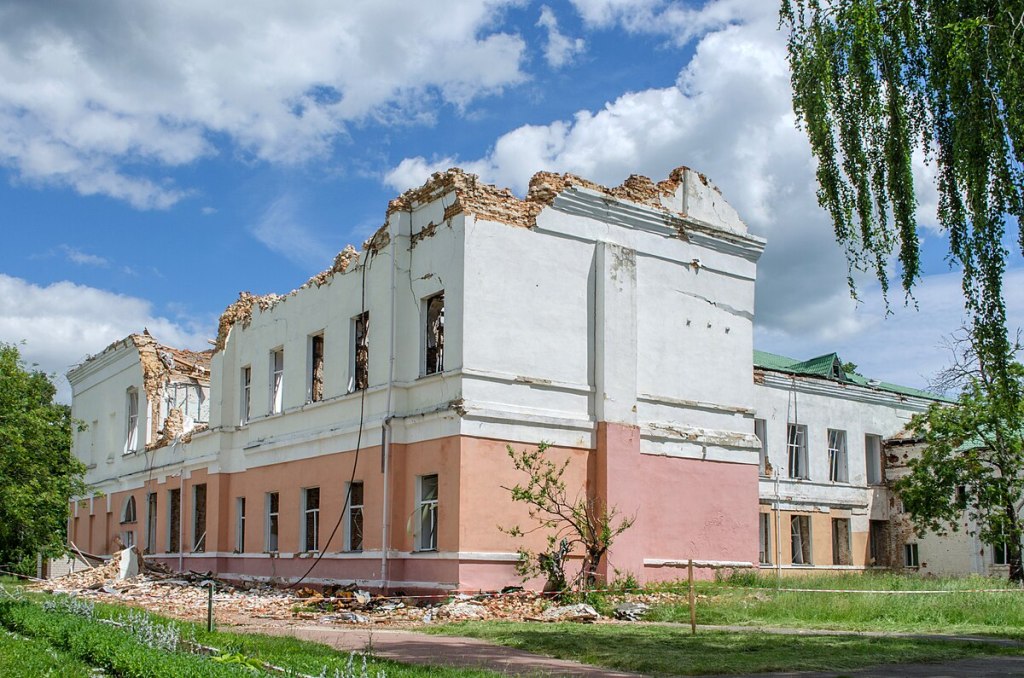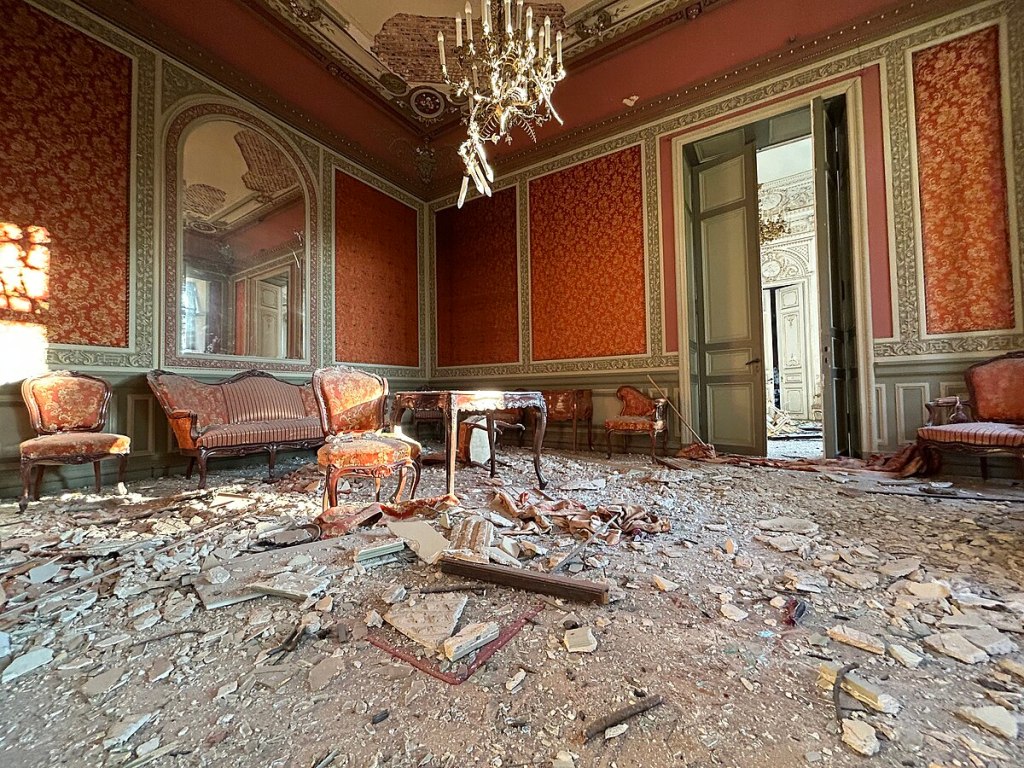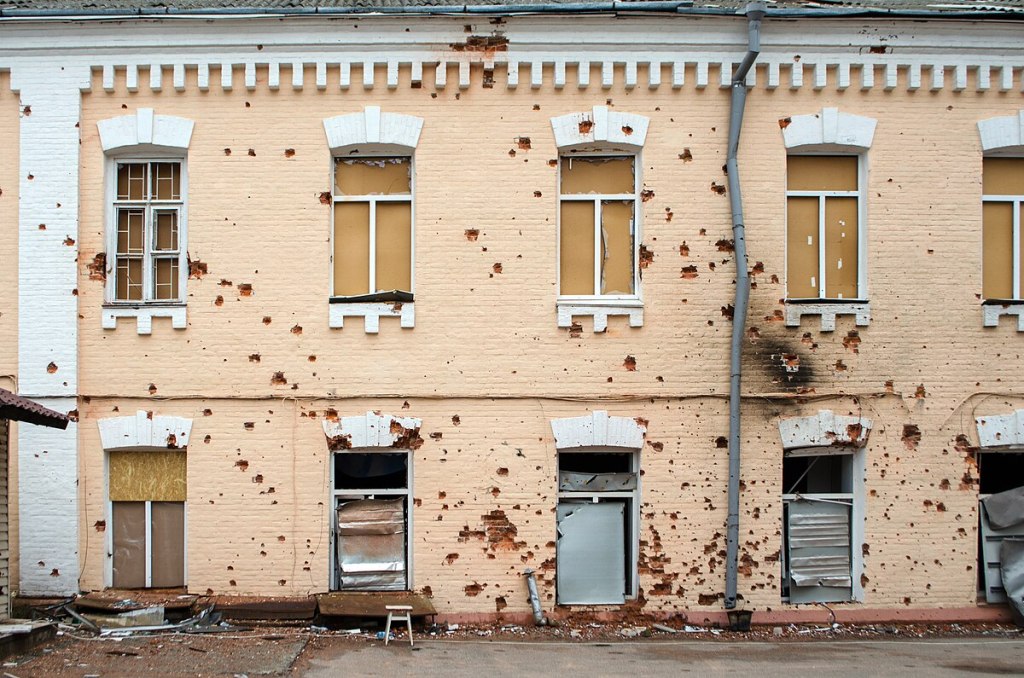In 2023 Wiki Loves Monuments in Ukraine local organising team introduced “War destroys monuments”, a special category that documents the toll of Russia’s war on Ukrainian cultural heritage. Winners of the category are these 15 remarkable photos of Ukraine’s ruined monuments.
Wiki Loves Monuments in Ukraine was held in October 2023 for the twelfth time since 2012. This was the second contest edition held during the full-scale war which Russia launched against Ukraine in February of 2022.
One of the project’s goals is raising awareness of the condition of the cultural heritage. This has always been important, but is especially so during the war, which saw hundreds of Ukrainian cultural monuments destroyed or damaged by Russian attacks.
As of 6 March 2024, UNESCO has confirmed damage to 345 cultural heritage sites in Ukraine since 24 February 2022. According to Ukraine’s Ministry of Culture and Information Policy, there are 945 destroyed or damaged sites. And, unfortunately, these numbers are growing every day.
“We have set up this special category to help document the evidence of Ukrainian cultural heritage destruction by Russia and to share pictures not only with Ukrainian readers but also worldwide through Wikipedia,” said Olha Krezub, an organising committee member.
Participants of the contest submitted 417 images for this special category. These photos depict multiple Ukrainian regions – from Chernihiv in the north to Odesa in the south, from Kharkiv in the east to Zhytomyr in the northwest.
Winners were chosen by a separate jury panel, which included:
- Yevhenii Vasiukov, architect, photographer and co-author of the project “Architecture of Mykolaiv”.
- Nadiia Lyshtva, architect and heritage protection specialist from Dnipro.
- Serhii Petrov, historian, journalist, photographer, chronicler of Russian war crimes in Kharkiv region and Ukrainian Wikipedia contributor.
First place


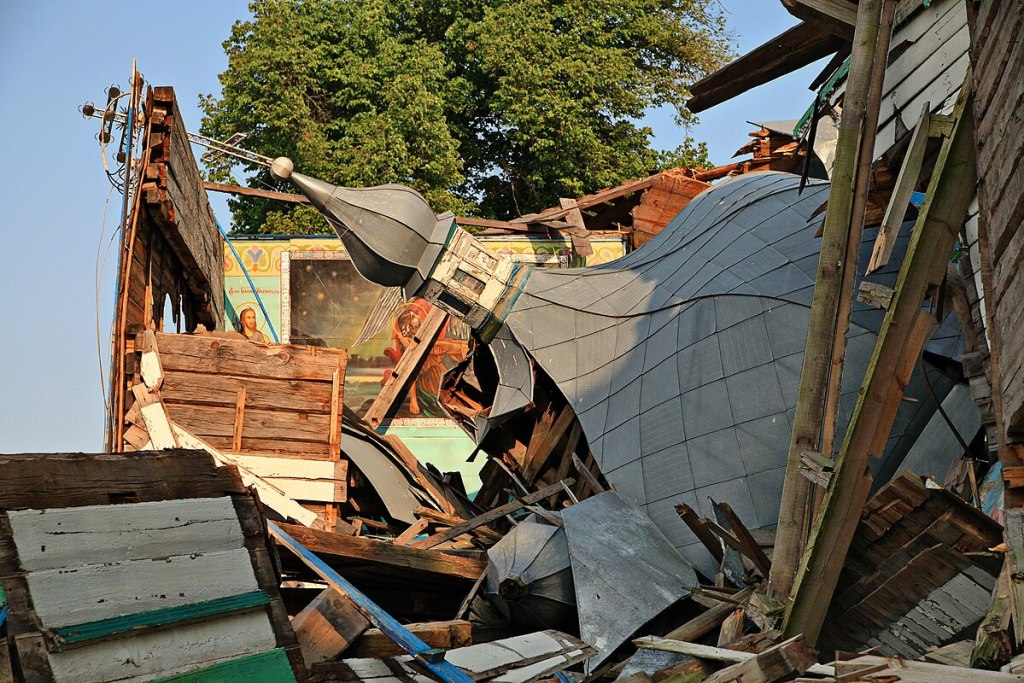
Photos by Oleksandr Malyon, CC BY-SA 4.0
The first place belongs to a photo series of the ruins of the wooden Church of the Nativity of the Theotokos in Viazivka village, Zhytomyr Oblast (northwestern Ukraine). It was destroyed by Russian shelling on 7 March 2022. The photos were taken by Oleksandr Malyon.
The Church of the Nativity of the Theotokos is an architectural monument of national significance and was built in 1862. In the 1930s, the Soviet authorities closed and even disassembled a part of it. During the German occupation, the church was restored as a place of worship, and locals completed restoration works after the end of World War II. In 2022 it would have celebrated the 160th anniversary but was destroyed by Russia at the beginning of the full-scale invasion.
The photo series of the church was taken on 27 May 2023.
Second place
The second place was awarded to the photo of the “Store”, a historical building on Constitution Square in Kharkiv (eastern Ukraine) that was damaged by a Russian missile strike on 2 March 2022. The photo was taken by Mykhailo Titarenko.
The building, known as the “Store” among Kharkiv residents, is an architectural monument of Kharkiv that is located on Constitution Square. It was built in 1894 as an ironmongery store designed by Ukrainian architect Viktor Velychko. In 1954 two floors were added to the original building, and the building hosted the “Lux” store during the Soviet period.
The photo was taken on 28 March 2022. It was also acknowledged by the jury of the special award “Kharkiv’s Landmarks” within Wiki Loves Monuments in Ukraine.
Third place
The third place was awarded to the photo of the Palace of Labour in Kharkiv, damaged by a Russian missile attack on 2 March 2022. The photo was taken by Nataliia Lastovets.
The Palace of Labour, or the Revenue House of the “Russia” Insurance Company, is an architectural monument of local significance. It was built in 1914-1916 by the architect Hyppolit Pretreaus. After the installation of the Soviet government, the building was nationalised, it became headquarters of the People’s Commissariat of Labour and of the All-Ukrainian Council of Trade Unions. During the Battle of Kharkiv, Russian troops shelled the city centre, severely damaging many historical buildings, including the Palace of Labour.
The photo was taken on 18 June 2022. It took third place in the “Kharkiv Landmarks” special award as well.
Fourth place
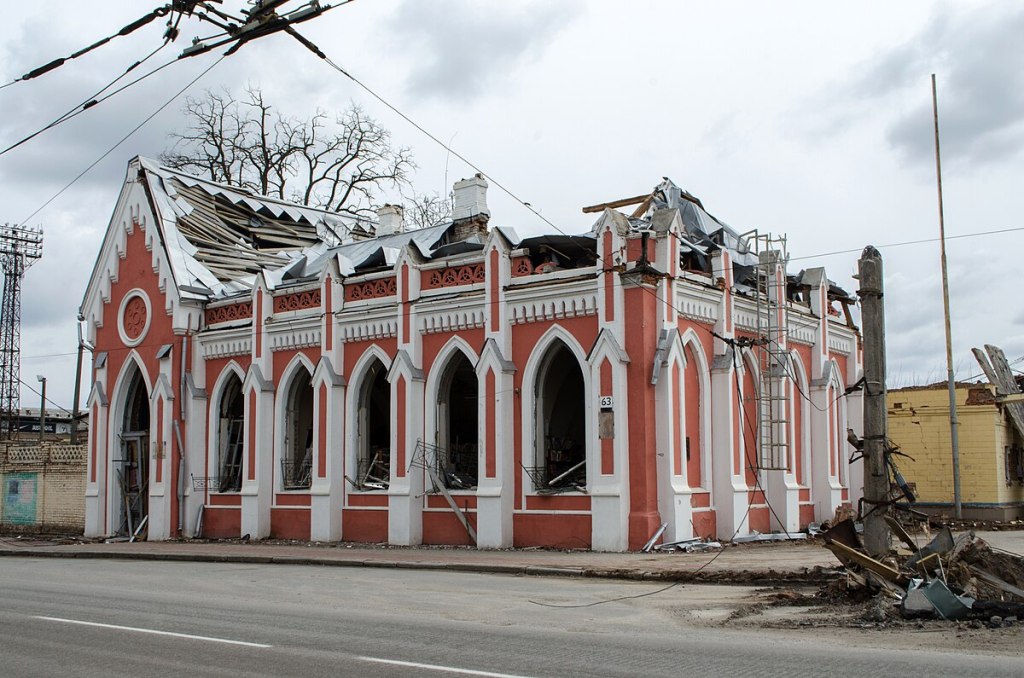

Photos by Serhii Tarabara, CC BY-SA 4.0
A series of photos of Tarnovsky House, partially destroyed during a rocket attack on Chernihiv on 11 March 2022. The photo was taken by Serhii Tarabara.
The Tarnovsky House was built in 1902 to house the Chernihiv Museum of Ukrainian Antiquities which was based on the private collection of a famous collector, landlord and patron of the arts Vasyl Tarnovsky. At the end of 19th century, Tarnovskys’ affairs began to worsen, and the patron bequeathed antiquities from his collection to the Chernihiv Zemstvo. After the Soviet regime came to power, the House was renamed to the First Soviet Museum, and in 1923-1925 it was merged with other Chernihiv museums and became the Chernihiv State Museum. Since 1980 the building has been used as the regional library for children and youth.
Photos were taken on 10 April 2022.
Serhii Tarabara said that “the desire to enrich Wikimedia Commons and media with new information” motivated him to join.
Fifth place
The fifth place was also taken by Serhii Tarabara with his photo of the destroyed building of the district court in Chernihiv.
This historical monument of local significance was damaged on 25 February 2022 by a Russian air strike. The building was set up in 1904 for the district court, which was there till 1917. Then the government of Soviet Ukraine was located there for a short period of time. At the moment of the full scale invasion the building served as the headquarters of the Security Service of Ukraine (SBU) in Chernihiv Oblast.
The photo was taken on 10 April 2022.
Sixth place
The photo of Yelets Monastery damaged by shelling in Chernihiv won the sixth place. It was taken by Serhii Tarabara.
Yelets Assumption Monastery is an Orthodox monastery and a monument of national significance. It was founded as a men’s monastery by Prince Sviatoslav II of Kyiv in 1060. In 1239 it was destroyed during the Mongol invasion. In the 1680s the monastery was rebuilt in Ukrainian Baroque style, which was distinctive for that time, under the leadership of the famous Ukrainian church figure Joannicjusz Galatowski. When the Soviet Union was established, the monastery was closed. After Ukraine regained independence, it resumed as a women’s monastery.
The photo was taken on 19 August 2022.
Seventh place
The seventh place went to the photo of the Pavlovs’ Manor House in Kharkiv, partially destroyed by a Russian missile on 6 July 2022. It was taken by Mykhailo Titarenko.
The Pavlovs’ Manor House is a neoclassical architectural monument of local significance, built for Yegor Pavlov in 1832. At the beginning of the 20th century the building was used as the hotel “Hast”. In 1919 it was nationalised and served as Kharkiv headquarters of the Forces of Special Purpose, which were supposed to fight anti-Bolshevik protests.
The roof, most ceiling constructions, walls and portico were completely destroyed.
The photo was taken on 23 April 2023.
Eighth place
The photo of the building of the People’s Commissariat of Labour, destroyed by a missile attack on 2 March 2022, is on the eighth place. It was also taken by Mykhailo Titarenko.
The building of the People’s Commissariat of Labour is an architectural monument of local significance built in the Art Nouveau style in the 1910s. The precise year when it was built remains under question, but according to one of the theories, the building was erected in 1916 as the 1st Primary School, and in 1925-1927 it was extended for an administrative function, for the People’s Commissariat (ministry) of Labour. Before Russia’s full scale invasion of Ukraine, the Faculty of Economics of V.N. Karazin Kharkiv National University was located there.
The photo was taken on 16 March 2022.
Ninth place
A photo of the former men’s gymnasium in Novhorod-Siverskyi, Chernihiv Oblast, destroyed by Russian air strikes on 12 May 2022 has taken ninth place. In the building, windows are smashed, the roof and a part of the facade are completely destroyed. The photo was taken by Serhii Tarabara.
The building of the former men’s gymnasium in Novhorod-Siversk is a historical monument of local significance built in the middle of the 19th century in the neoclassical style. It is also an example of civic architecture, but its key features were lost during the Soviet period: the ground floor windows were hewed out to make them bigger, keystones above the ground floor openings and first floor window mouldings disappeared.
This building hosted an alma mater for multiple famous people, such as historian and folklorist Mykhailo Maksymovych. During the Soviet period, it housed the Ushynskyi boarding school, and now it hosts the Ushynskyi Novhorod-Siverskyi State Lyceum.
The photo was taken on 15 July 2022.
Tenth place
A photo of the building of the youth centre, partially destroyed by an air strike on the Chernihiv City Council Building on 27 February 2022, took the tenth place. The photo was made by Serhii Tarabara.
The building of the Chernihiv youth centre is an architectural monument of local significance in Chernihiv. The construction was started in 1935 based on the project of an architect Petro Savych, and since 1939 the building hosted the Shchors Cinema, which became the third largest cinema house in the city. During the Second World War, it was destroyed, but then rebuilt in 1947. It was a place for the trial of Hungarian and German prisoners of war in the same year. The building was reconstructed in 1962: “red” and “round” halls were added. The cinema was closed in 2017, and the building became the regional youth centre.
The photo was taken on 14 April 2022.
Destroyed by war: interiors
The jury highlighted a photo of the damaged interior of the House of Scientists as a result of a missile attack on Odesa on 23 July 2023 in a special category. The photo was taken by Oleksandr Levytskyi.
The House of Scientists is an architectural monument of national significance, built in 1896-1897 as a Count Tolstoy’s art gallery next to his mansion. It was designed by architects Francesco Boffo and Giorgio Torricelli.
Windows were shattered, nineteenth century furniture and interiors, as well as the interior summer garden, were damaged. Not only the room in the photo is affected, but so is the whole building. Oleksandr recorded destruction two hours after the strike.
The photo was taken on 23 July 2023. Oleksandr Levytskyi’s works have been awarded in the previous years’ competitions. He believes that “it makes sense to upload [photos] for the competition, because they will become public heritage”.
Destroyed by war: exteriors
Another photo awarded by the jury in a special category, is an image of the building of the Chernihiv Fire Society with heavy damage by shelling. The photo was taken by Serhii Tarabara.
The building of the Fire Society is an architectural monument of local significance in Chernihiv. It was built in 1893 for a firefighter crew of the voluntary fire association. The building combines historicist style and Gothic elements, such as crenellations on the towers and lancet windows. In 1941 during the German occupation, it was burnt down. After the Second World War ended, the building no longer served its original purpose: when it was repaired in the post-WWII years, it housed the Chernihiv Regional Printing House named after Sergei Kirov. Today the building houses numerous offices and retail stores. It was damaged by shelling at the beginning of the full scale invasion, when there were active military operations around Chernihiv. Not only the facade but also the interior of the building was damaged.
The photo was taken on 20 April 2023.

Can you help us translate this article?
In order for this article to reach as many people as possible we would like your help. Can you translate this article to get the message out?
Start translation
